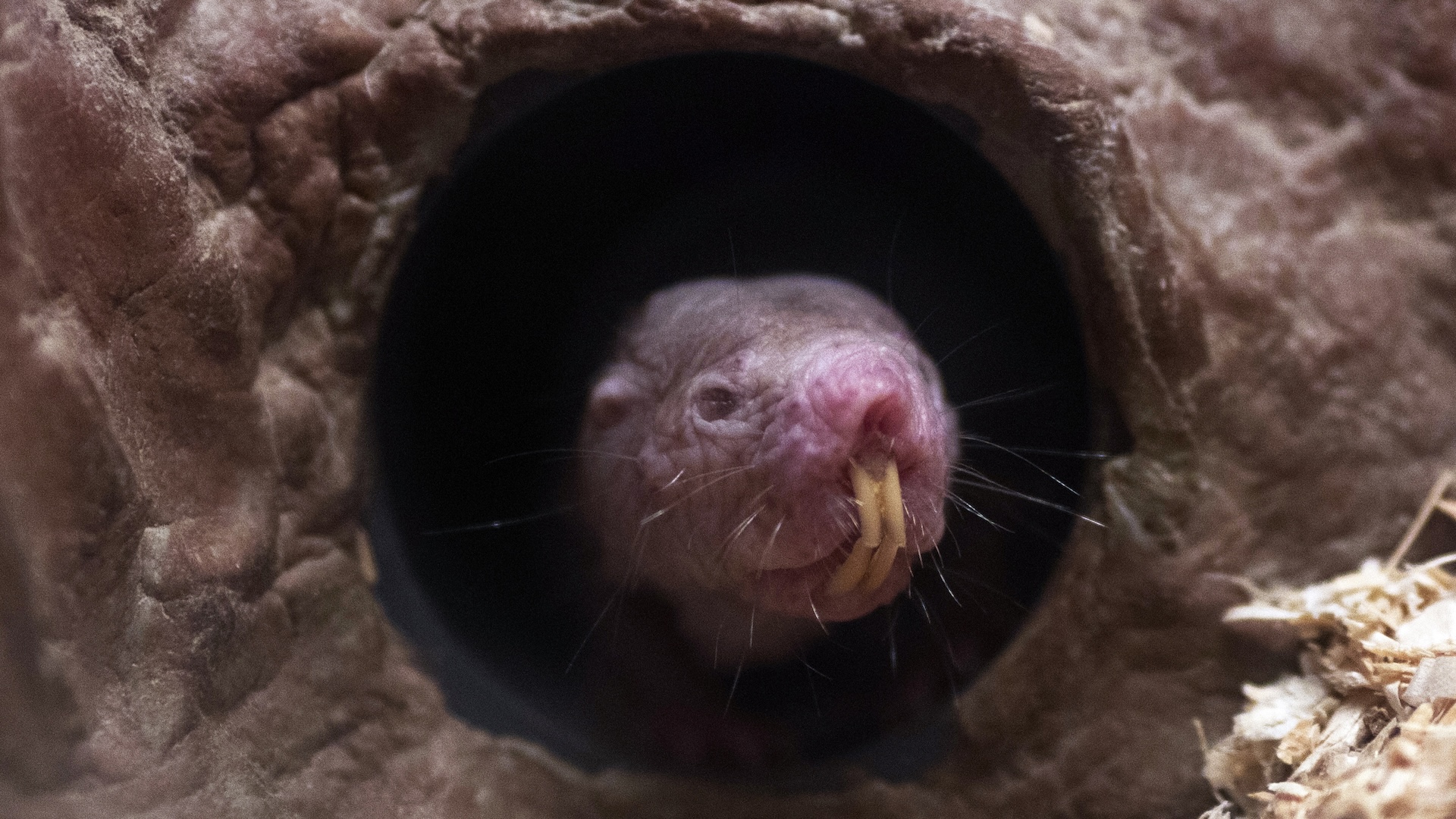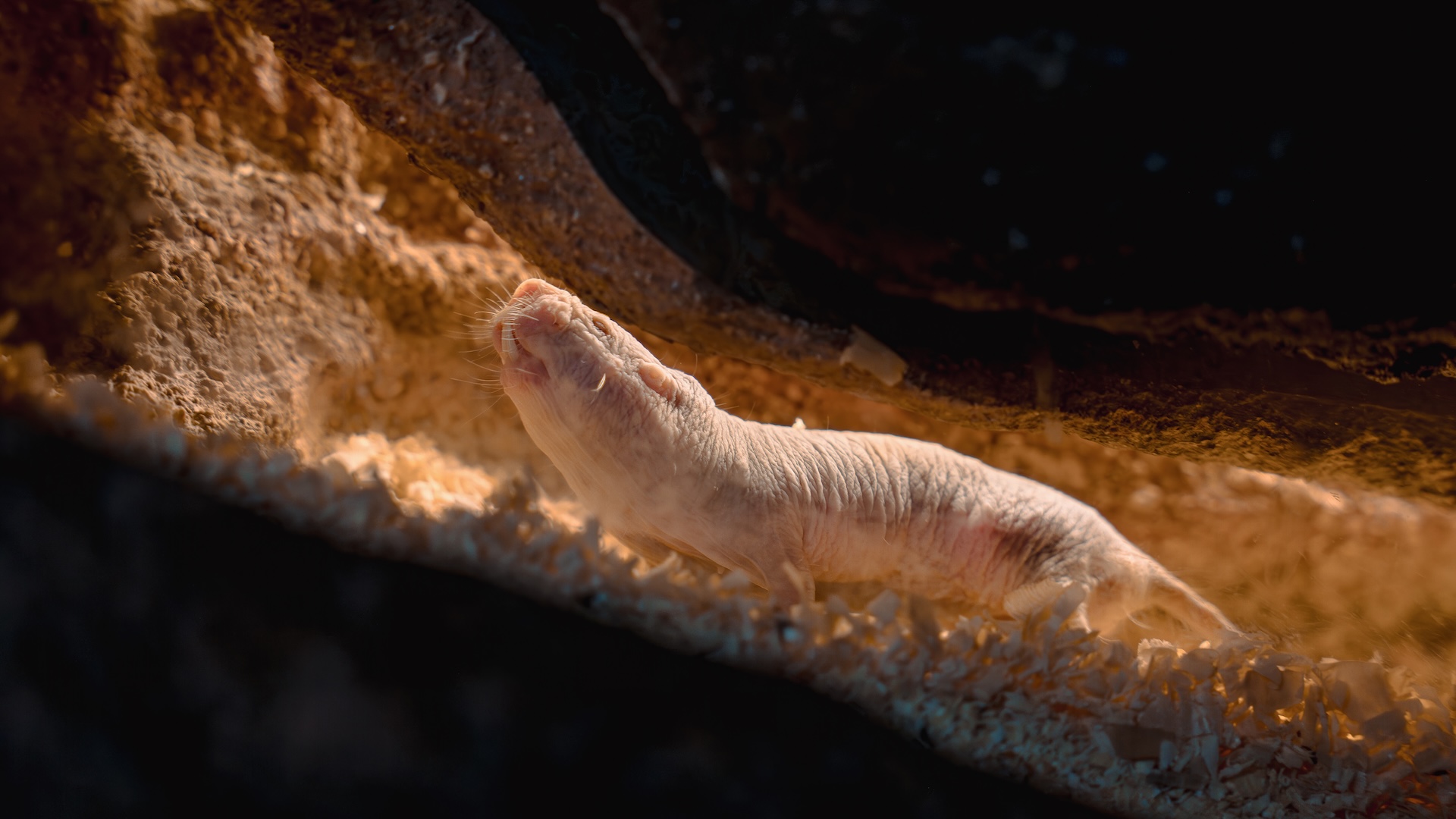Some naked mole rats are designated toilet cleaners, study suggests
Naked mole rats may have specific roles, such as cleaning the toilet chamber or transporting waste, rather than being generalist helpers. The findings suggest naked-mole-rat colonies are even more complex than we thought.

Naked mole rats may have specific roles, including "toilet cleaners" and "garbage collectors," new research suggests.
The findings, published Wednesday (Oct. 8) in the journal Science Advances, hint that naked-mole-rat colonies are even more complex than scientists previously thought.
"Our findings reveal the distinct roles of breeders and the remarkable behavioral diversity among nonbreeders, underscoring the complexity of naked mole-rat social organization," Teruhiro Okuyama, a behavioral neuroscientist at the University of Tokyo, told Live Science.
Naked mole-rats (Heterocephalus glaber) are small, almost-hairless rodents that live in underground colonies of between about 20 to several hundred individuals. They are one of just two mammal species known to be eusocial, meaning they show advanced social organization, similar to bees or wasps. For eusocial mammals, the queen reproduces, while most of the other members of the colony — which can stretch across several miles of tunnels — are sterile workers.
These workers perform an array of jobs, including soldiers, tunnel diggers, foragers and caretakers.
But it was unknown whether individuals switched jobs or tended to stick to specific roles. To investigate, Teruhiro Okuyama, a behavioral neuroscientist at the University of Tokyo, and his colleagues created an artificial burrow in their lab. It was made up of nine chambers, each 5.9 by 5.9 inches (15 by 15 centimeters), and arranged in a three-by-three grid. The adjacent boxes were connected by 6-inch-long (16 cm) pipes.
The mole-rats designated different chambers for specific uses, including a nesting place, a garbage area, a communal "toilet" and several compartments without specific functions.
Get the world’s most fascinating discoveries delivered straight to your inbox.
For 30 days, Okuyama and his colleagues studied five colonies, each of which contained about 20 individuals, by implanting microchips in the mole rats and installing detectors throughout the colony box. This allowed the researchers to continuously monitor where the animals went and which individuals they spent time with.

They found that the breeding animals — the queen and a few males — stayed close to each other most of the time and followed each other around.
But the workers, they discovered, could be divided into six groups based on their movements. "They were doing different jobs if they weren't breeding," Okuyama told Live Science.
One group moved a lot and spent the most time in the garbage chamber, so Okuyama speculated that they might be transport specialists. Another cluster mostly occupied the toilet chamber, so the researchers proposed that these individuals might be cleaners.
A third group was less active and generally remained in the nest box. These were often younger animals, or individuals that were older and perhaps past their peak. "I think the job is gradually changing just depending on the age," Okuyama said."
Complex colonies
By revealing that there might be distinct roles for naked mole-rats apart from breeding or being a generic worker, the work underscores how much more complex their social organization might be than we thought, he added.
"It's a really interesting study," Chris Faulkes, an evolutionary ecologist at Queen Mary, University of London who wasn't involved in the work, told Live Science. "Anyone who has spent time looking at naked mole rats would agree that there are loads of individual things going on and certain animals will be spending lots of time in the toilet chamber, sweeping up or digging. It's a good attempt to quantify these complexities further."
However, Markus Zöttl, a behavioral ecologist at Linnaeus University in Sweden who wasn't involved in the work, said it's hard to draw too many conclusions from the observations.
"This paper shows that there is variation in behavior between helpers. There are some helpers that are more active, some that are resting more," he told Live Science. "But that's what you expect from any social animal. Some would be more proactive; others would be more socially aggressive; others are more timid. Some people might call this animal personality, and others would call it a caste system."
We should also be wary of jumping to conclusions about what happens in the wild based on a relatively small and simple lab burrow with short tunnels, Zöttl noted. "If you think about the ecology of these species, a burrow can spread over the area of a football field," he said.
Different behaviors could emerge in a complex, natural burrow system with long tunnels where animals need to dig to find enough roots to feed dozens or more colony members, rather than having food supplied, he said.
While traveling through these long tunnels, the animals often establish their place in the social hierarchy by shoving, interacting or avoiding each other as they pass, Faulkes said, which would then influence their behavior within the colony. However, he still thinks the lab work gives us new insights.
"There is this hidden behavioral complexity, and you've got groups or individuals that do very different things and interact in different ways within the colony," he said.

Chris Simms is a freelance journalist who previously worked at New Scientist for more than 10 years, in roles including chief subeditor and assistant news editor. He was also a senior subeditor at Nature and has a degree in zoology from Queen Mary University of London. In recent years, he has written numerous articles for New Scientist and in 2018 was shortlisted for Best Newcomer at the Association of British Science Writers awards.
You must confirm your public display name before commenting
Please logout and then login again, you will then be prompted to enter your display name.
